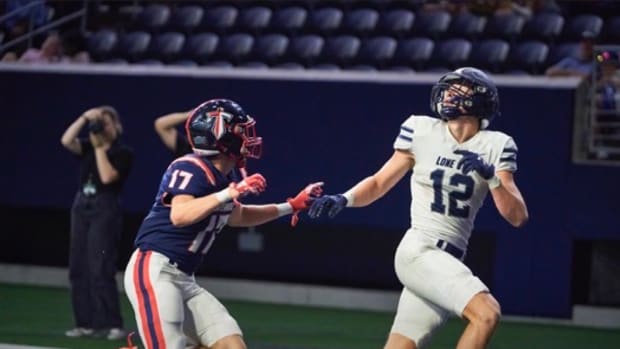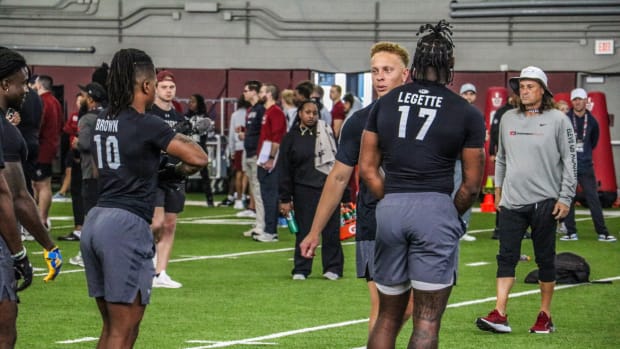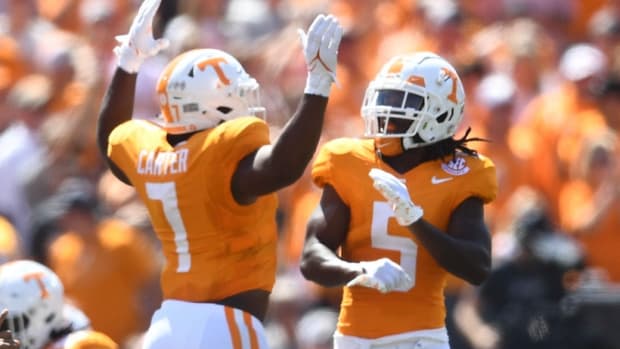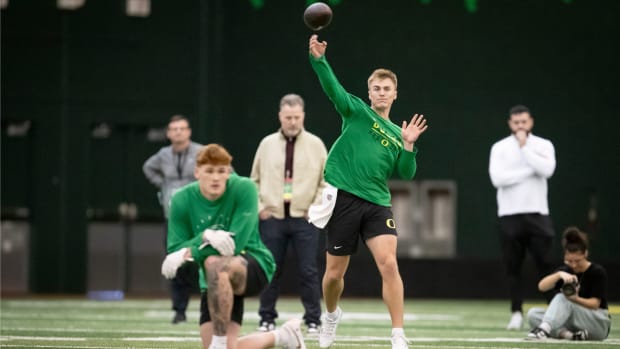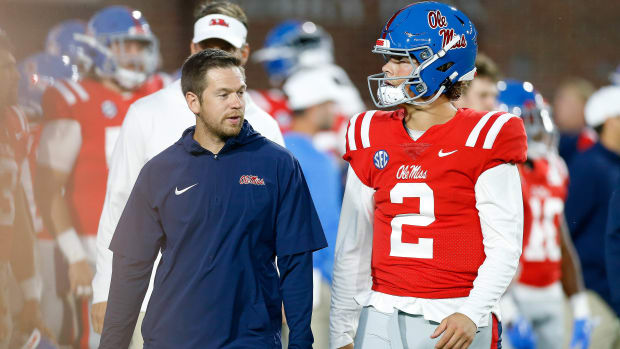Will a Non-Quarterback Ever Win the Heisman Trophy Again?

A new set of Heisman odds—also known as sports talk radio segment fillers—was released this week with Alabama quarterback Tua Tagovailoa at the top of the list, and you have questions…
From Andrew: When is the next time a non-QB wins the Heisman?
This is a fascinating question, because college offenses have evolved to the point where quarterbacks can so dominate a game statistically that it makes it difficult for running backs—apparently the only other eligible position according to voters the past 20 years—to compete. How could a back stand a chance against Kyler Murray, who averaged 11.6 yards every time he threw the ball, averaged 7.2 yards every time he ran the ball (even with sacks included) and had the ball in his hands every single play?
Derrick Henry was the last non-quarterback to win the Heisman, and that win was based on near-superhuman durability down the stretch. He carried the 2015 Alabama offense in some critical late-season games. But had the award been given out after the College Football Playoff instead of before, I imagine many voters would have joined me in placing Clemson quarterback Deshaun Watson first (even though Henry’s team won the national title).
I’ve long hoped we voters would look beyond the quarterbacks, but that’s very difficult to do because, to be honest, they affect the game more than anyone else. The other issue is sometimes voters—not the former winners, but a lot of others—don’t understand the game well enough to grasp when they’re seeing something truly special.
In my first year as a voter in 2009, I had Nebraska defensive tackle Ndamukong Suh No. 1. That wasn’t a protest vote. Suh made 85 tackles—including 24 tackles for loss and 12 sacks—playing nose. Those numbers are insane. He blew up opposing offenses from the inside out. To put that in perspective, Alabama defensive tackle Quinnen Williams played one more game last season than Suh did in ’09 and made 71 tackles with 19.5 tackles for loss and eight sacks. Williams was easily the best defensive player in the country and one of the top five overall. Williams had an incredible season. Suh had an all-time great season and lost to Alabama tailback Mark Ingram, who probably wasn’t the best player on his own team. (That was probably linebacker Rolando McClain.)
I do think that, thanks to Pro Football Focus and other deep dive publications, football literacy is increasing. We’re all understanding a little better how everyone affects the game. That’s why I think the best chance for a non-QB/non-RB may come from another special season on the defensive line. Suh probably wouldn’t have won, but he’d have gotten more votes posting the same season in 2018 that he posted in 2009. I think that kind of season may have to come from an edge rusher to truly capture the nation’s imagination.
What would it take? Probably something as crazy as the 1988 season for Alabama’s Derrick Thomas. He had 27 sacks in 12 games. That’s positively mind-boggling. And I would hope that such a season in 2019 would win that player the Heisman or at least put him on even footing with the top quarterbacks.
From @FundraiserCards: What’s the new head coach average tenure going forward? Two years like Major Applewhite?
My friend Dave Curtis, who used to write about college football for The Sporting News before he decided to lead a fulfilling life as a high school educator, used to joke that a reasonable longevity expectation for an NBA coach was “a year and a losing streak.” Applewhite got fired after two seasons at Houston. Pop quiz: Other than a bunch of restaurants, what does billionaire Houston booster and board of regents chair Tilman Fertitta also own? That’s right. The Houston Rockets.
So we probably shouldn’t adjust our expectations across the board because an NBA owner acted like an NBA owner. Shortly after Applewhite was hired, Houston president Renu Khator cracked that Houston’s football expectations are so high that the school fires coaches who go 8–4. Applewhite went 7–5 and 8–4. So the school did exactly what the school president said the school would do.
I don’t think this changes the runway for most new hires. It still seems to be holding steady at two years and a third-year slide. And some ADs seem to have dialed this back because they’ve taken an honest look at their programs and realized pulling the trigger too soon is either too expensive or might dig the hole even deeper. Lovie Smith hasn’t prospered at Illinois, going 9–27 in three seasons. But he was playing a ton of young players last season who showed signs of life in a win at Minnesota and an eight-point loss to Northwestern in the season finale. Firing Smith after season three might have made a bad situation worse. Smith’s buyout—which would have cost $12 million after last season—probably made AD Josh Whitman’s decision for him, but a program that has been through as much churn as that one might need to try stability for a little while and see if it works.
From @PacoHara: I’m really excited about the Neal Brown hire at WVU. He seems like a perfect fit. Am I wrong to be this optimistic?
You are not wrong. Brown’s success at Troy is quite translatable to West Virginia. He’s used to not being the first choice of most of the players he recruits. He’s accustomed to needing to dig to find hidden gems or to project players who can grow into different positions at the college level. There is nothing schticky about the way he runs his program. He’ll build the best offense he can around the talents of the players he has. Like predecessor Dana Holgorsen, he’ll keep an eye out for transfers who can provide a quick talent infusion to supplement the developing that he and his staff will need to do with the rest of the roster.
But I would caution West Virginia fans to be patient. One of the reasons Holgorsen left—and jumped into the shark tank at Houston that I described above—is that last season probably was going to be West Virginia’s best shot for a while at a Big 12 title. The Mountaineers had the quarterback (Will Grier), great receivers (David Sills V and Gary Jennings), an uber-athletic left tackle (Yodny Cajuste) and a do-everything linebacker (David Long). West Virginia got tantalizingly close, too. The Mountaineers lost a 59–56 thriller in Morgantown that, had they won, would have put them in the Big 12 title game. But all those stars are now gone. Oklahoma just added another excellent transfer quarterback. Texas is ascendant. Iowa State is good. Oklahoma State is due for a bounceback.
This isn’t going to be easy for Brown, and it’s going to take some time. So give him that time and don’t freak out when it becomes clear how difficult the path forward really is.

